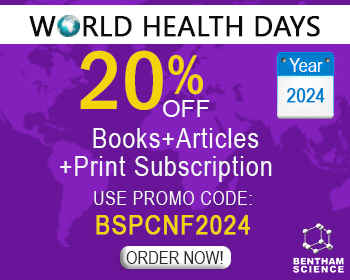Abstract
Background: Due to the appearance of resistant bacterial strains against the antimicrobial drugs and the reduced efficiency of these valuable resources, the health of a community and the economies of countries have been threatened. Objective: In this study, the antibacterial assessment of zinc sulfide nanoparticles (ZnS NPs) against Streptococcus pyogenes and Acinetobacter baumannii has been performed.
Methods: ZnS NPs were synthesized through a co-precipitation method using polyvinylpyrrolidone (PVP), polyvinyl alcohol (PVA) and polyethylene glycol (PEG-4000). The size and morphology of the synthesized ZnS NPs were determined by a scanning electron microscope (SEM) and it was found that the average size of the applied NPs was about 70 nm. In order to evaluate the antibacterial effect of the synthesized ZnS NPs, various concentrations (50μg/mL, 100 μg/mL and 150 μg/mL) of ZnS NPs were prepared. Antibacterial assessments were performed through the disc diffusion method in Mueller Hinton Agar (MHA) culture medium and also the optical density (OD) method was performed by a UV-Vis spectrophotometer in Trypticase™ Soy Broth (TSB) medium. Then, in order to compare the antibacterial effects of the applied NPs, several commercial antibiotics including penicillin, amikacin, ceftazidime and primaxin were used.
Results: The achieved results indicated that the antibacterial effects of ZnS NPs had a direct relation along with the concentrations and the concentration of 150 μg/mL showed the highest antibacterial effect in comparison with others. In addition, the ZnS NPs were more effective on Acinetobacter baumannii.
Conclusion: The findings of this research suggest a novel approach against antibiotic resistance.
Keywords: Zinc sulfide nanoparticles, Antibacterial effects, Streptococcus pyogenes, Acinetobacter baumannii, Antimicrobial resistance, Antibiotic resistance.
[http://dx.doi.org/10.1128/9781555817886]
[http://dx.doi.org/10.1056/NEJMp1215093] [PMID: 23343059]
[http://dx.doi.org/10.1086/344654] [PMID: 12516026]
[http://dx.doi.org/10.1016/j.jinf.2004.12.001] [PMID: 16038764]
[PMID: 27581211]
[http://dx.doi.org/10.1016/j.chemosphere.2008.12.006] [PMID: 19178931]
[http://dx.doi.org/10.4155/fsoa-2017-0109] [PMID: 29682325]
[http://dx.doi.org/10.1128/JCM.00422-08] [PMID: 18463210]
[http://dx.doi.org/10.3201/eid1402.070888] [PMID: 18258111]
[http://dx.doi.org/10.2807/esm.10.09.00563-en]
[PMID: 30109840]
[http://dx.doi.org/10.1021/acs.chemrev.8b00277] [PMID: 29847102]
[http://dx.doi.org/10.1128/CMR.00058-07] [PMID: 18625687]
[http://dx.doi.org/10.1093/jpids/piy018] [PMID: 29579216]
[http://dx.doi.org/10.1097/QCO.0000000000000518] [PMID: 30520737]
[http://dx.doi.org/10.1086/529198] [PMID: 18444865]
[http://dx.doi.org/10.3201/eid0802.010244] [PMID: 11897063]
[http://dx.doi.org/10.4161/viru.19700] [PMID: 22546906]
[PMID: 15549020]
[http://dx.doi.org/10.1097/01.qco.0000171920.44809.f0] [PMID: 15985826]
[http://dx.doi.org/10.1128/AAC.01464-06] [PMID: 17646423]
[http://dx.doi.org/10.1016/j.tips.2014.10.007] [PMID: 25458541]
[http://dx.doi.org/10.1016/j.addr.2013.07.011] [PMID: 23892192]
[http://dx.doi.org/10.1007/s11671-007-9077-1]
[http://dx.doi.org/10.1007/978-1-4939-6966-1_14]
[http://dx.doi.org/10.1039/c0jm01776k]
[http://dx.doi.org/10.1039/c3tb20413h]
[http://dx.doi.org/10.1016/j.trac.2014.09.010]
[http://dx.doi.org/10.1039/C3RA43992E]
[http://dx.doi.org/10.1039/C4RA07250B]
[http://dx.doi.org/10.2174/1568026615666150414112925] [PMID: 25877098]
[http://dx.doi.org/10.2174/1568026615666150414125015] [PMID: 25877091]
[http://dx.doi.org/10.2174/1568026615666150414141601] [PMID: 25877090]
[http://dx.doi.org/10.2174/1568026615666150414152431] [PMID: 25877084]
[http://dx.doi.org/10.1039/C2NR32447D] [PMID: 23203029]
[http://dx.doi.org/10.9734/ARRB/2014/5370]
[http://dx.doi.org/10.9734/ARRB/2015/10949]
[http://dx.doi.org/10.4103/2277-9175.153893] [PMID: 25878994]
[http://dx.doi.org/10.5194/jsss-6-259-2017]
[http://dx.doi.org/10.1016/j.cej.2013.05.046]
[http://dx.doi.org/10.1002/jbm.b.31620] [PMID: 20225252]
[http://dx.doi.org/10.1007/s13204-012-0138-0]
[http://dx.doi.org/10.1021/la104825u] [PMID: 21401066]
[http://dx.doi.org/10.1039/C7CS00748E] [PMID: 30462112]
[http://dx.doi.org/10.1002/crat.200800271]
[http://dx.doi.org/10.2174/1568026615666150414142209] [PMID: 25877089]
[http://dx.doi.org/10.1016/j.msec.2018.08.032] [PMID: 30274098]
[http://dx.doi.org/10.1016/j.envpol.2010.11.030] [PMID: 21177008]
[http://dx.doi.org/10.1016/j.jes.2018.06.010] [PMID: 30473306]
[http://dx.doi.org/10.1007/s10854-016-5848-8]
[http://dx.doi.org/10.2174/1568026615666150506150109] [PMID: 25961521]
[http://dx.doi.org/10.1021/acsomega.8b02807] [PMID: 31459759]
[http://dx.doi.org/10.1016/j.physb.2019.07.001]
[http://dx.doi.org/10.5772/60630]
[http://dx.doi.org/10.1201/9781420014495]
[http://dx.doi.org/10.1038/nm1145] [PMID: 15577930]
[http://dx.doi.org/10.1001/jama.1996.03530280052036] [PMID: 8544270]
[http://dx.doi.org/10.1038/nature06536] [PMID: 18288193]
[http://dx.doi.org/10.1016/j.arcmed.2005.06.009] [PMID: 16216651]
[http://dx.doi.org/10.1016/j.tips.2010.08.002] [PMID: 20843562]
[PMID: 17900043]
[http://dx.doi.org/10.1002/1439-7633(20020301)3:2/3<124:AID-CBIC124>3.0.CO;2-J] [PMID: 11921390]
[http://dx.doi.org/10.1038/nrmicro727] [PMID: 15040181]
[http://dx.doi.org/10.2147/IJN.S35347] [PMID: 23233805]
[http://dx.doi.org/10.1021/la701067r] [PMID: 17658863]
[http://dx.doi.org/10.1016/j.biotechadv.2008.09.002] [PMID: 18854209]
[PMID: 22745541]
[http://dx.doi.org/10.1016/j.msec.2017.02.120] [PMID: 28482499]
[http://dx.doi.org/10.1002/adma.201001934] [PMID: 21089062]
[http://dx.doi.org/10.1007/978-3-642-24428-5]
[http://dx.doi.org/10.1016/j.jconrel.2011.07.002] [PMID: 21763369]
[http://dx.doi.org/10.1007/s40089-019-0270-x]
[http://dx.doi.org/10.1080/03067319.2019.1667986]
[http://dx.doi.org/10.1016/j.ijbiomac.2015.01.008] [PMID: 25592841]
[http://dx.doi.org/10.1016/j.mssp.2016.11.002]
[http://dx.doi.org/10.1111/ijac.13145]
[http://dx.doi.org/10.1007/s00339-019-2823-2]
[http://dx.doi.org/10.1007/s11051-018-4281-8]
[http://dx.doi.org/10.1039/C7RA13400B]
[http://dx.doi.org/10.1007/s10570-019-02245-y]
[http://dx.doi.org/10.1080/10667857.2016.1215081]
[http://dx.doi.org/10.1016/j.jinorgbio.2016.11.023] [PMID: 27898345]
[http://dx.doi.org/10.1039/c3ra46642f]
[http://dx.doi.org/10.1039/C3TB21363C]
[http://dx.doi.org/10.1016/j.matdes.2015.08.103]
[http://dx.doi.org/10.1007/978-1-61779-983-9_14]



























